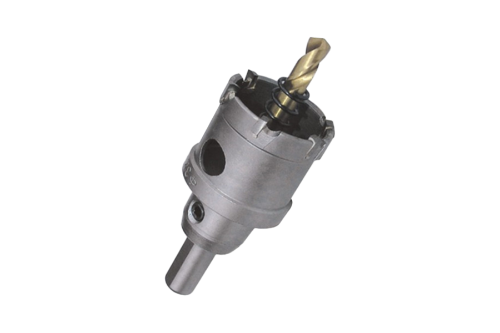TCT (Tungsten Carbide Tipped) hole saws are cutting tools designed to create holes in various materials, including wood, plastic, metal, and composite materials. They are commonly used in construction, woodworking, plumbing, and electrical installations. Here are some common uses of TCT hole saws:
Woodworking: TCT hole saws are widely used in woodworking for creating holes in wooden boards, panels, or furniture pieces. They are commonly used for tasks such as installing doorknobs, routing wire channels, or creating openings for pipes or cables.
Plumbing and Electrical Installations: TCT hole saws are valuable tools for plumbers and electricians. They are used to create holes in walls, ceilings, or floors to accommodate pipes, conduit, wiring, or electrical boxes. TCT hole saws provide efficient cutting in various materials commonly encountered in plumbing and electrical work.
Metalworking: TCT hole saws with specialized designs and teeth configurations can be used for cutting through metal surfaces. They are used in applications such as HVAC installations, metal fabrication, or creating openings in metal sheets or ductwork.
Construction and Renovation: TCT hole saws find applications in construction and renovation projects. They are used for creating holes in building materials like drywall, fiber cement boards, plywood, or plastic panels. TCT hole saws can be used to install lighting fixtures, ventilation systems, or access points.
DIY Projects: TCT hole saws are useful tools for DIY enthusiasts and hobbyists. They can be used for various projects such as making holes for clock inserts, speaker installations, creating customized crafts, or working on DIY furniture.
When using TCT hole saws, it's important to keep the following precautions in mind:
Safety Gear: Wear appropriate safety gear, including safety glasses, gloves, and hearing protection, to protect yourself from flying debris and noise generated during the cutting process.
Proper Tool Selection: Choose the correct size and type of TCT hole saw for the material you are working with. Using the wrong size or type of hole saw can result in poor cutting performance, damage to the tool or workpiece, or potential accidents.
Secure Workpiece: Ensure that the workpiece is properly secured before starting the cutting process. This will prevent movement or vibration, which can affect the accuracy of the cut and potentially cause damage or injury.
Lubrication: Depending on the material being cut, using a suitable lubricant or coolant can help reduce friction, extend the life of the hole saw, and improve the cutting performance. Refer to the manufacturer's guidelines for lubrication recommendations.
Controlled Cutting Speed: Maintain a controlled and consistent cutting speed to ensure a smooth and clean cut. Excessive speed can lead to overheating and premature wear of the hole saw, while too slow a speed can result in inefficient cutting.
Clearing Debris: Regularly clear the accumulated debris from the hole saw teeth to maintain cutting efficiency and prevent clogging. Use a brush or compressed air to remove the chips and dust during the cutting process.




 English
English
 中文简体
中文简体
 Español
Español
 عربى
عربى












